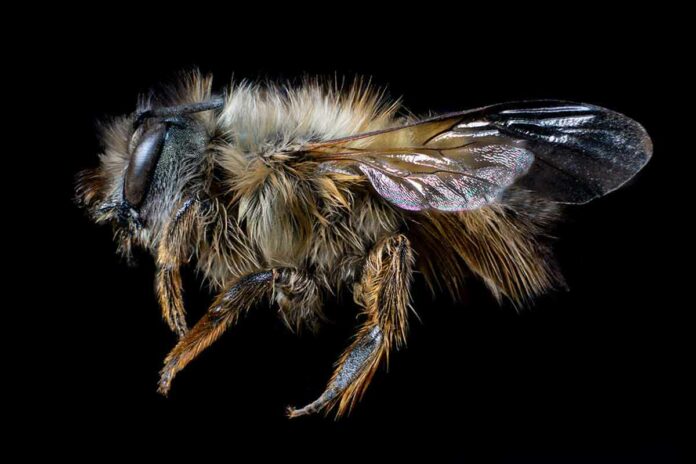Researchers at the University of Toronto Scarborough discovered the presence of two bee species in Canada. One of these species can pose a significant threat to native mason bees.
The non-native mason bees named Osmia cornifrons and Osmia taurus, are from northern Asia. They were introduced to North America as crop pollinators more than 50 years ago.
According to Scott MacIvor, a professor in the department of biological sciences at U of T Scarborough, the presence of O. taurus is the most concerning. Maclvor is the lead author of the study. The study was published in the journal PeerJ
Maclvor cited a recent study conducted in the United States. The study discovered that an 800% increase in O. taurus coincided with a 90% decline in six different species of native mason bees. The study was conducted in several mid-Atlantic states over a 13-year period.
O. cornifrons are also known as the horned-face bee. They were introduced to the United States in the late 1960s to help pollinate fruit crops. But O. taurus was accidentally introduced around the same time due to its similar appearance.
There is no evidence that O. cornifrons has a similar negative impact on native bee populations. But MacIvor believes that non-native bees are invasive when they displace native bees by introducing disease, disrupting nests or simply outcompeting them for resources.
Potential routes
According to MacIvor, the bees most likely crossed natural land borders connecting Michigan, New York, and Ontario. Bees have been present in large numbers in the United States for decades. But it begs the question, why have they only recently appeared in Canada?
One reason could be the growing popularity of bee hotels. These are being used to help struggling native bee populations in urban areas. Both bee species are cavity-nesting. They may be thriving as a result of the recent availability of these hotels.
Another possible source of their arrival in Canada is the online sale of bee cocoons to gardeners and bee hotel owners. It’s possible that they were sold non-native species instead of native mason bees. Importing bee cocoons from the United States is illegal. Maclvor believes that they may have slipped through border inspections. Bee cocoons can also be purchased online from Canadian companies. So, they may be shipped to other parts of Canada in the future.
Researchers discovered that batches of O. cornifrons were imported into Canada in the 1970s as part of agricultural experiments. But given the widespread surveying, there’s no evidence those bees could survive and reproduce in the wild.
Conservation of native mason bees
Protecting native mason bees is critical. Because they pollinate native plants as well as spring-flowering orchard crops like peaches, plums, cherries and apples.
There isn’t much that can be done to naturally stop the spread of non-native mason bees. But MacIvor says there are a few things people can do to help native mason bee populations.
He adds that building a bee hotel isn’t always the best way to help native mason bees. Because many native bee species make their nests elsewhere. Such as decaying wood or underground. Consider focusing on spring-flowering plants like lupine, beardtongue, raspberry or redbud. These will attract and support native mason bees.

